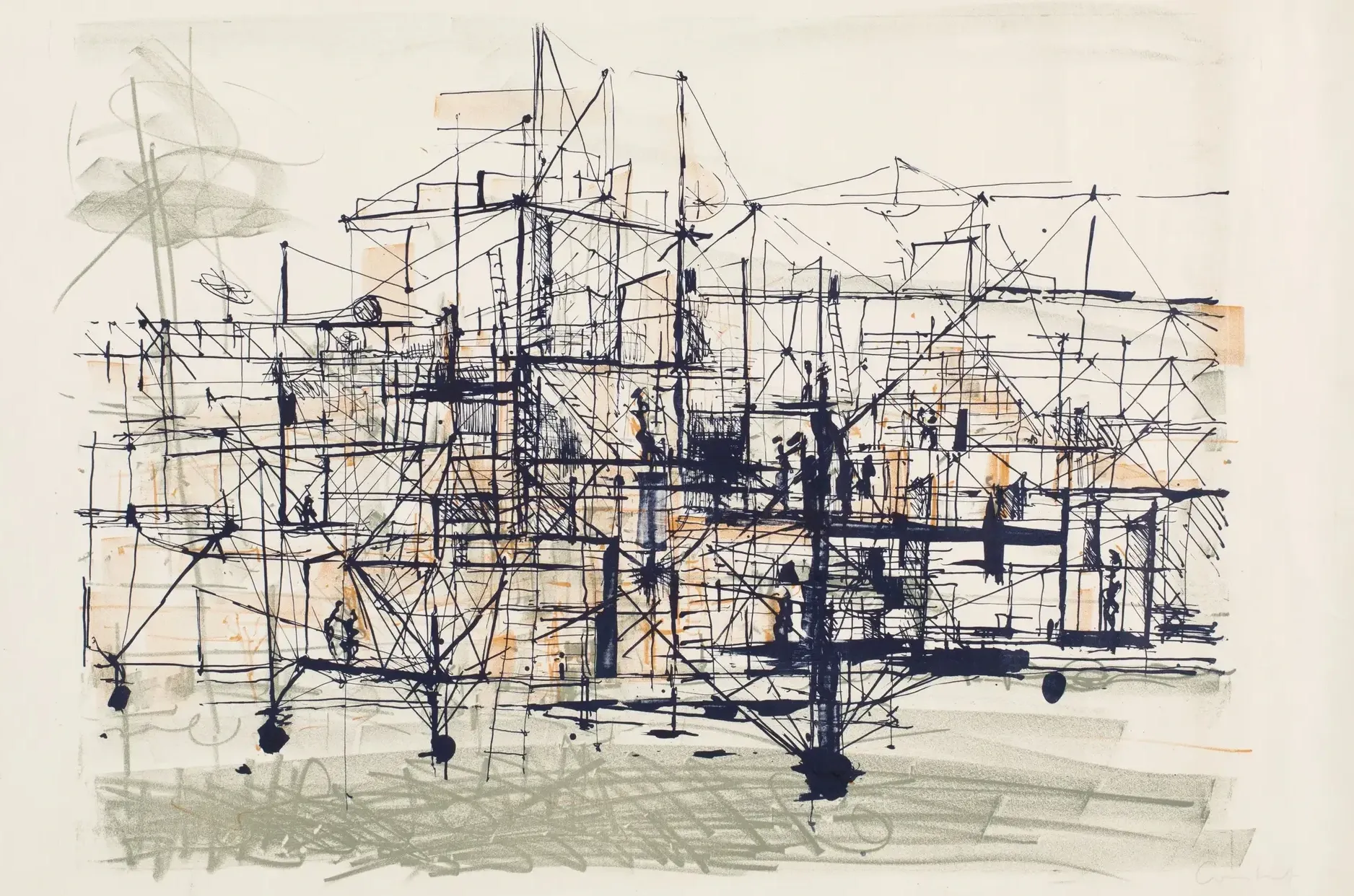New Babylon (1959–74) was a speculative city imagined by Dutch artist and Situationist Constant Nieuwenhuys. It proposed an urban future for the homo ludens—the playing human—where labor had been automated and everyday life became a continuous practice of creativity, improvisation, and movement.
The project consisted of drawings, maps, models, and manifestos. Constant envisioned elevated megastructures spanning across landscapes, linked like networks, with flexible interiors designed for constant transformation. Residents would wander nomadically, reshaping spaces as they desired.
It is obvious that a person free to use his time for the whole of his life, free to go where he wants, when he wants, cannot make the greatest use of his freedom in a world ruled by the clock and the imperative of a fixed abode. As a way of life, Homo Ludens will demand, firstly, that he responds to his need for playing, for adventure, for mobility, as well as all the conditions that facilitate the free creation of his own life. Until then, the principal activity of man had been the exploration of his natural surroundings. Homo Ludens himself will seek to transform, to recreate, those surroundings, that world, according to his new needs. The exploration and creation of the environment will then happen to coincide because, in creating his domain to explore, Homo Ludens will apply himself to exploring his own creation. Thus we will be present at an uninterrupted process of creation and re-creation, sustained by a generalized creativity that is manifested in all domains of activity.
At its heart, New Babylon was a critique of postwar consumer society. It rejected the city as a site of work and commerce, imagining instead a planetary infrastructure for freedom, play, and encounter. In this vision, boundaries dissolve, permanence gives way to drift, and design becomes an invitation to live otherwise.
See also: Situationism

Image from Nieuwe Instituut.


